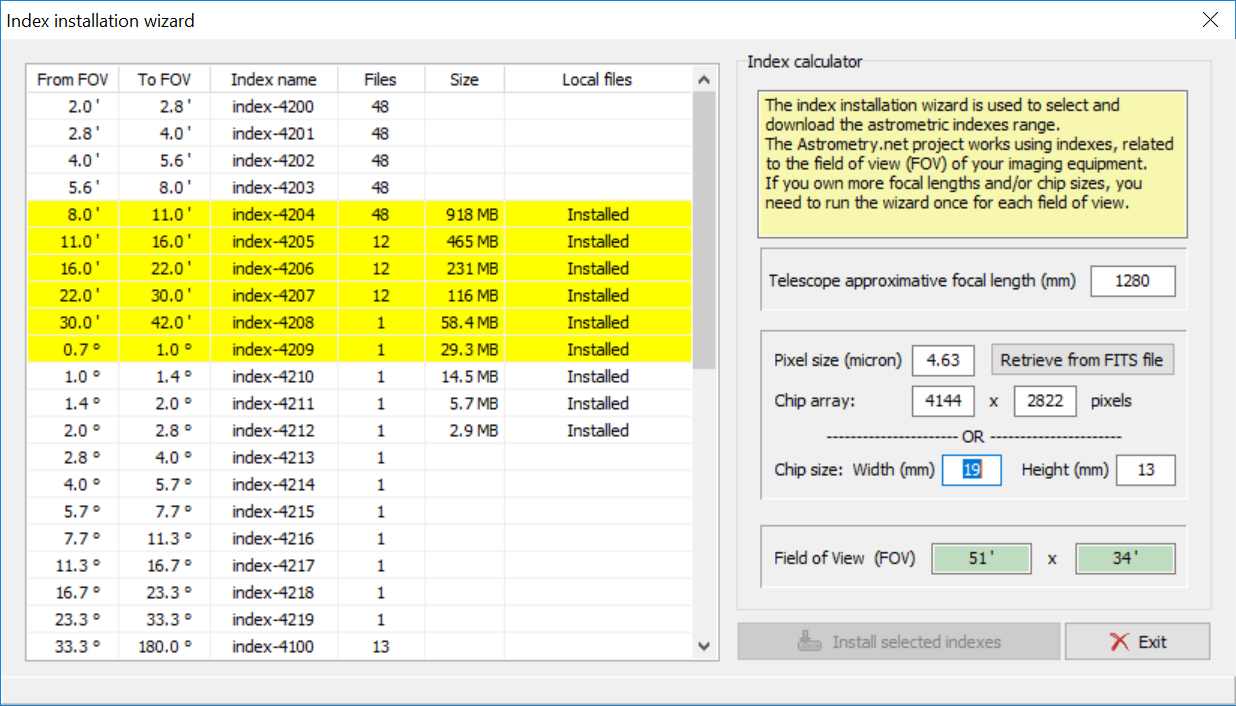
If your pixel scale is less than optimal, the sampling is termed "under sampled". You have near optimal sampling when your pixel scale is about half of the value of your seeing. This has meaning when compared to your "seeing" measured in arc secs of FHWM (Full Width Half Maximum) of the stars in your images and is referred to as "sampling".

If you have 9 micron square CCD pixels, then your pixel scale is 206.265 x 9 / 3048 or 0.6 arc sec per pixel. This is a straightforward calculation if you know the two input parameters.įocal ratio is the ratio of the focal length to telescope apertureįor example, if focal length = 3048 mm and aperture = 30.48 mm, Focal ratio = 10 or telescope is at f /10. Or just about 206 as many use as rule of thumb. The constant 206.265 converts microns to mm and radians to arc seconds.Ī micrometer or micron is one millionth of a meter, or equivalently one thousandth of a millimeter (mm) Pixel scale or sampling in arcseconds = (206.265) * (pixel size in microns) / (focal length in mm)įocal length = (206.265) * (pixel size in microns) / pixel scale To calculate pixel scale, one needs telescope focal length and pixel width or height in microns. Normally width is denoted by x and height y. If the camera pixels are not square, then both dimensions musts be considered. Many CCD cameras have square pixels (equal height and width). Pixel scale tells how much of the sky is covered by one pixel. This is the angular width and height of a pixel. Every astrometry observer and measurer needs to know the pixel scale of their images.


 0 kommentar(er)
0 kommentar(er)
